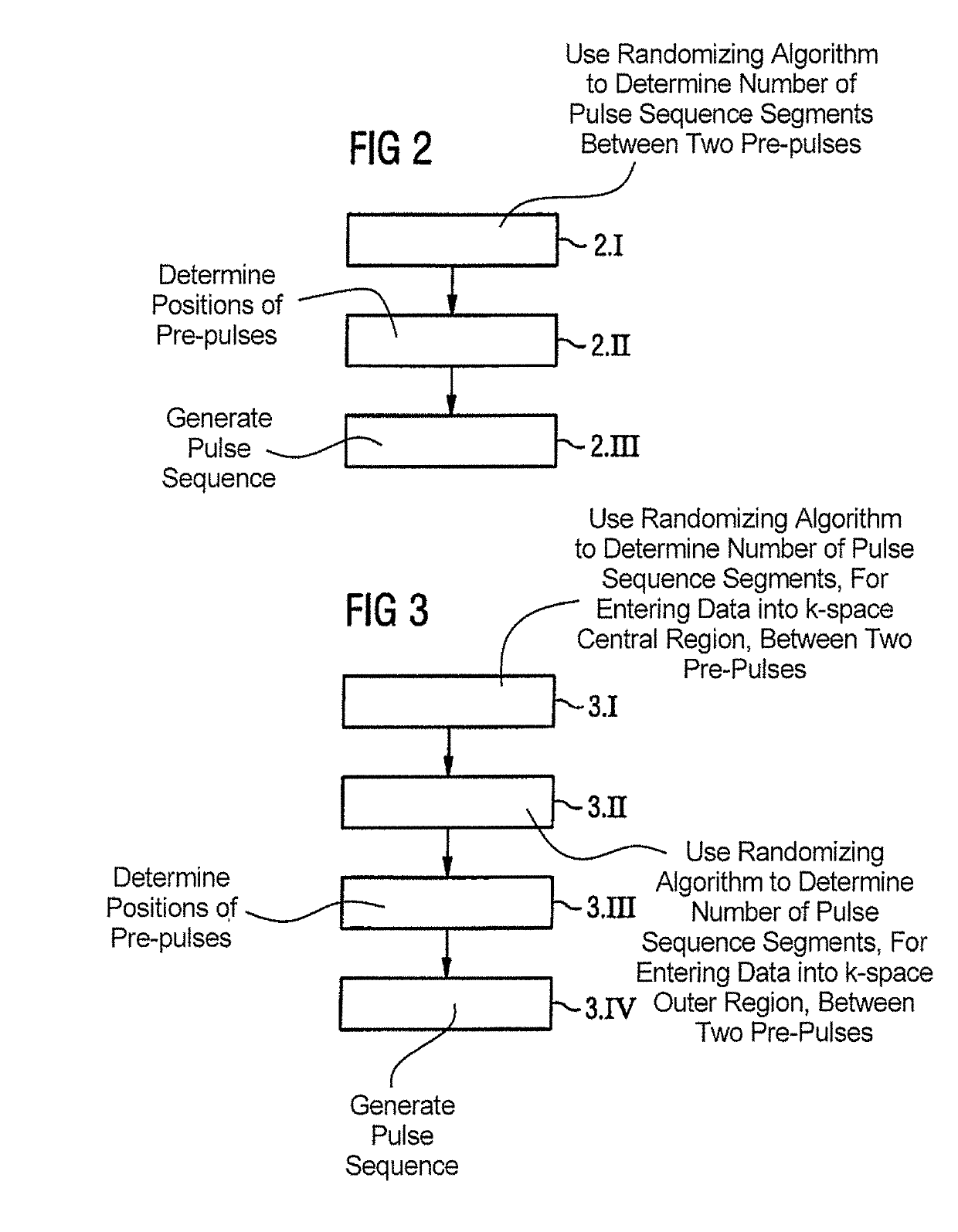Method and magnetic resonance apparatus for determining a pulse sequence
a magnetic resonance apparatus and pulse sequence technology, applied in the direction of magnetic measurement, measurement using nmr, instruments, etc., can solve the problems of steep edge steepness, significant vibration in the apparatus, and the effect of reducing the accuracy of the measuremen
- Summary
- Abstract
- Description
- Claims
- Application Information
AI Technical Summary
Benefits of technology
Problems solved by technology
Method used
Image
Examples
Embodiment Construction
[0038]FIG. 1 provides a basic schematic illustration of a magnetic resonance installation 1 according to the invention. This installation includes the actual magnetic resonance scanner 2 that has an examination volume or patient tunnel 8 therein. A bed 7 can be moved into this patient tunnel 8, such that during an examination a patient O or subject lying thereon can be supported at a specific position within the magnetic resonance scanner 2 relative to the magnetic system and radio-frequency system that is arranged therein, and can also be moved between various positions during a measurement.
[0039]Basic components of the magnetic resonance scanner 2 include a basic field magnet 3, a gradient system 4 with magnetic field gradient coils for generating magnetic field gradients in the x-direction, y-direction and z-direction, and a whole-body radio-frequency coil 5. The magnetic field gradient coils in the x-direction, y-direction and z-direction can be activated independently of each o...
PUM
 Login to View More
Login to View More Abstract
Description
Claims
Application Information
 Login to View More
Login to View More - R&D
- Intellectual Property
- Life Sciences
- Materials
- Tech Scout
- Unparalleled Data Quality
- Higher Quality Content
- 60% Fewer Hallucinations
Browse by: Latest US Patents, China's latest patents, Technical Efficacy Thesaurus, Application Domain, Technology Topic, Popular Technical Reports.
© 2025 PatSnap. All rights reserved.Legal|Privacy policy|Modern Slavery Act Transparency Statement|Sitemap|About US| Contact US: help@patsnap.com


